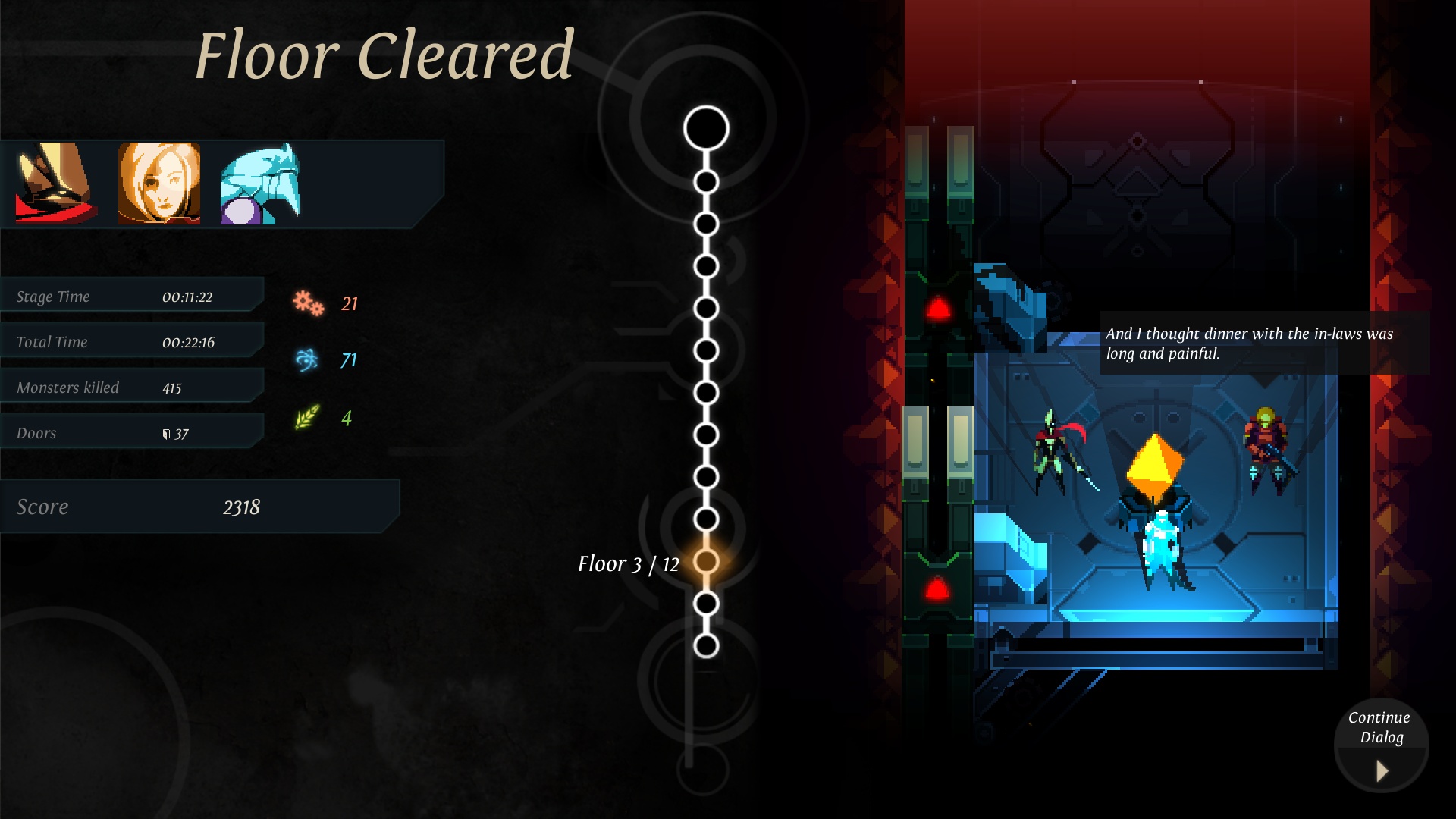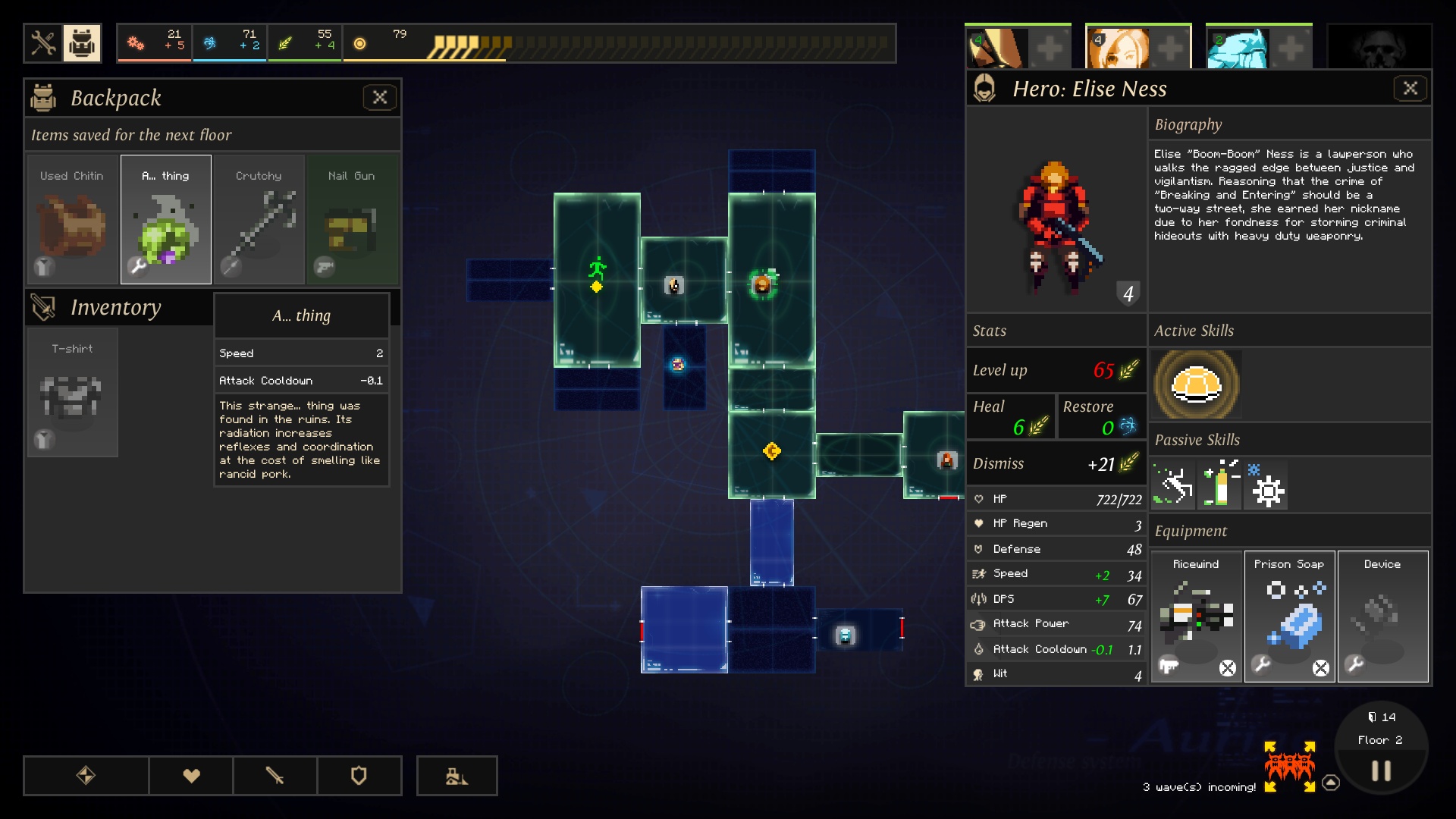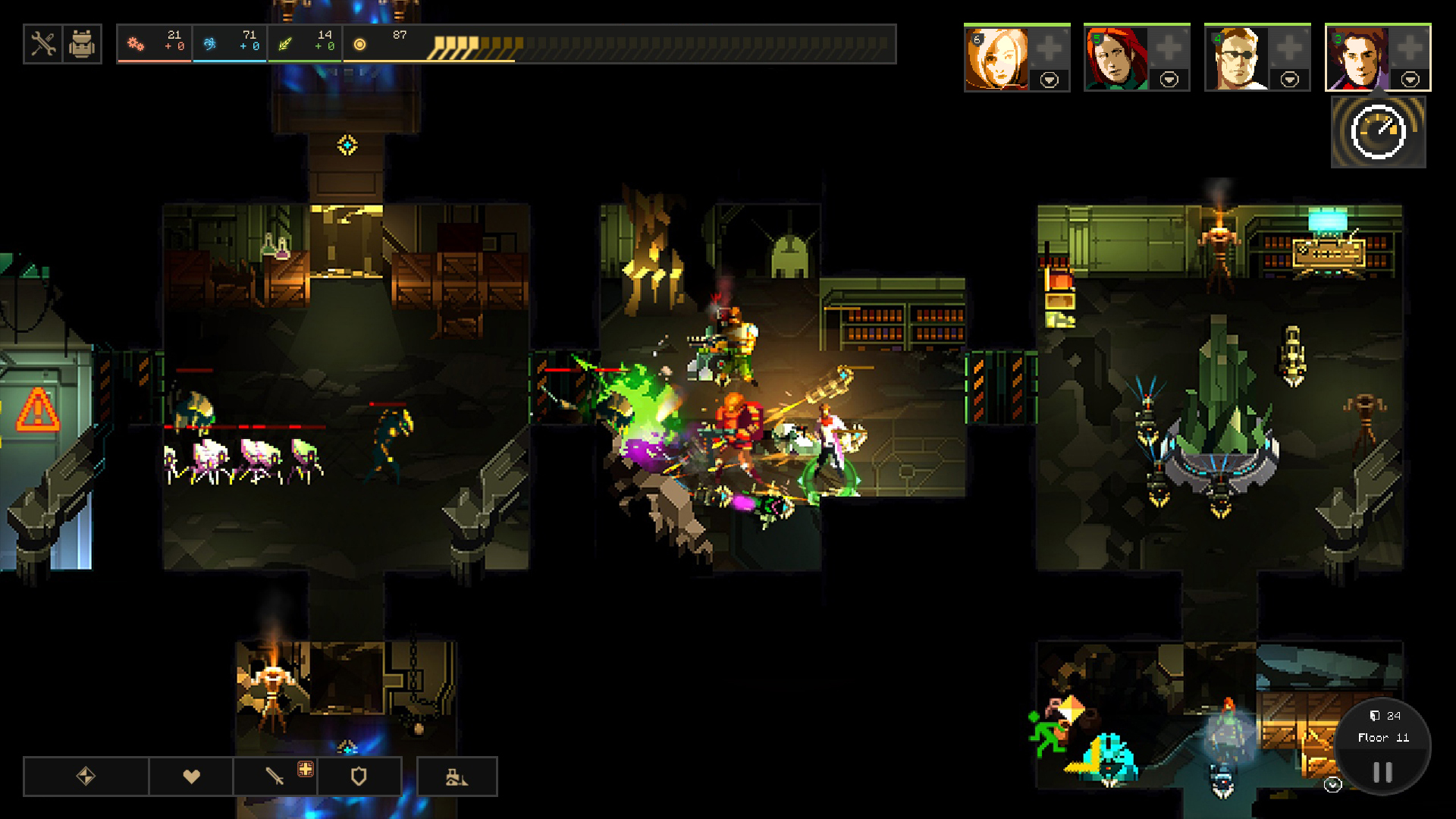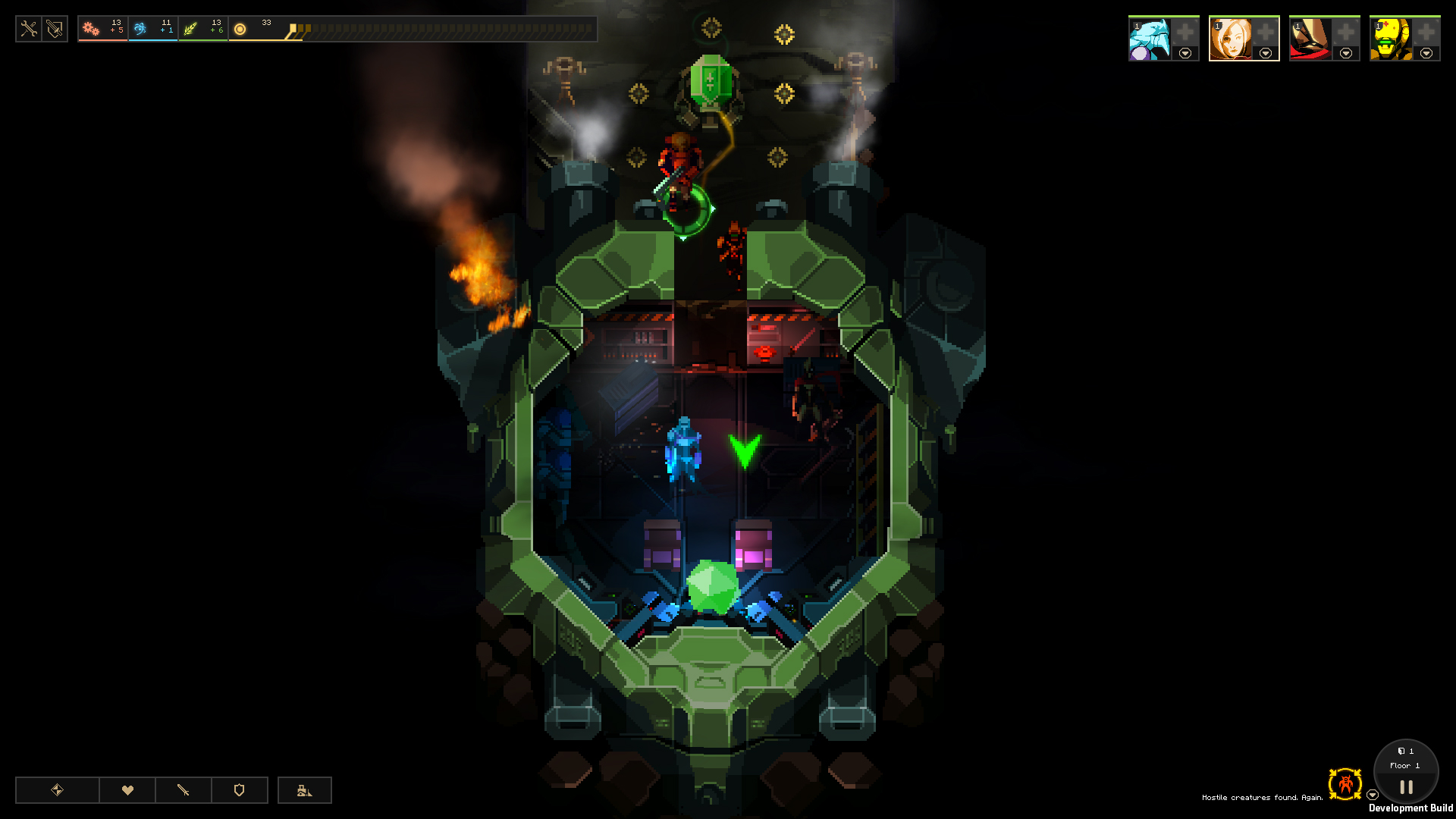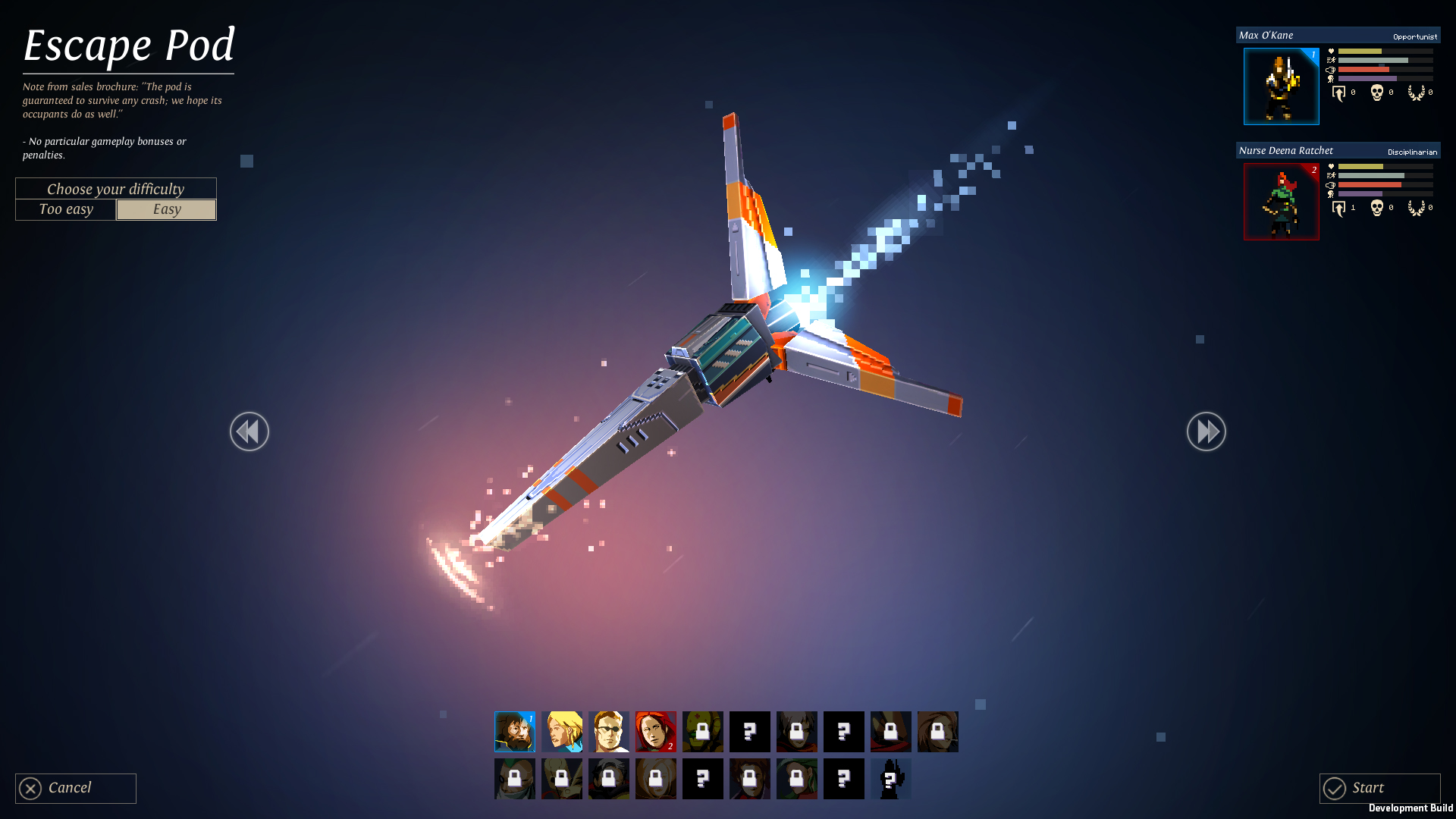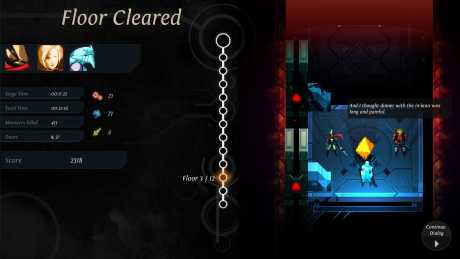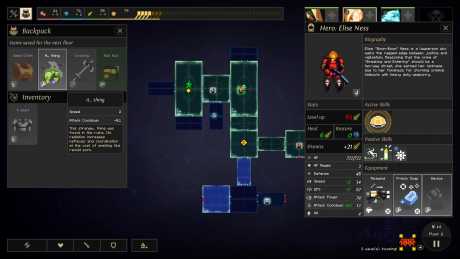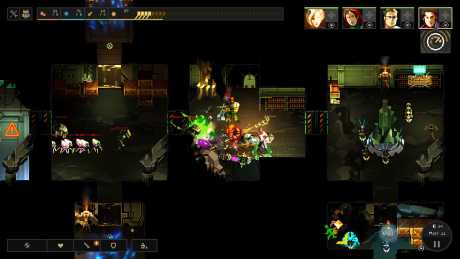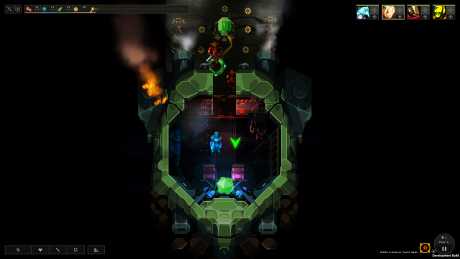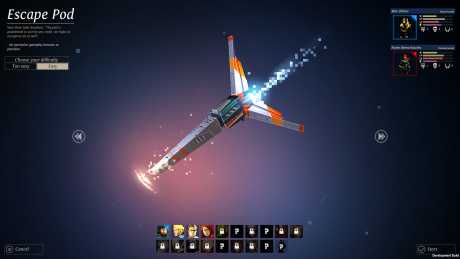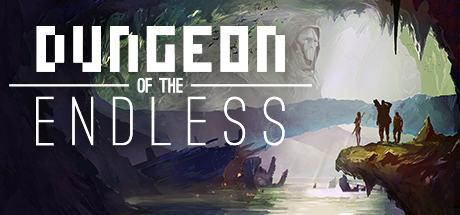Seamless genre-blend
In Dungeon of the Endless, a game best described as a tower defense, dungeon crawler roguelike with RPG elements, every bit of the genre-blend is as highlighted as the next, while still finding room to deliver exposition and lore, adding an additional layer of mystery to the experience, without ever feeling overbearing.
As the story goes, Success, a prison barge, is shot down while on route to the planet of Auriga, the epicenter of many events in Amplitude Studios’ Endless universe. A number of crew members manage to escape in drop pods, but upon crash landing find themselves trapped within an underground complex from which they must escape.
https://steamcommunity.com/sharedfiles/filedetails/?id=2653022239
As Dungeon of the Endless is a roguelike, this is where each of your runs will begin. You select up to four heroes for your party and the drop pod you’ll be dropping in, with each drop pod featuring different modifiers. You’re tasked with beating 12 monster-infested floors in order to escape the dungeon, each floor presenting a level within the run. Die trying, or manage to beat the game, and you get to do it all over again. There’s no reloading from a previous floor or anything like that, although you are allowed to save your game ironman style. Meta progression works by unlocking new drop pods and heroes for subsequent runs, should you fulfil certain requirements while playing.
There are a lot of things you’ll need to keep track of. Navigating each floor is done in a turn-based, dungeon crawler fashion. You open doors, looking for the elevator that will take you to the next floor. Each opened door functions as a turn, providing you with income, separated into four resources; Industry, Science, Food and Dust.
Industry plays into the tower defense aspect of the game, and is used for building modules – with each room having a fixed amount of slots they can be built on. These modules can affect anything from your income, to buffing heroes and assisting you in fighting the incoming onslaught of monsters, there being a chance of one each time you open a door. Monsters can’t just spawn anywhere, which is where the Dust resource comes into play. Dust is the only resource that can’t be obtained from modules, at least not by ordinary means, or carried over between floors, and is what you use to supply power to the rooms. If a room has no power, none of the modules built in it can function. Furthermore, it can serve as a spawn point for the monsters, as long as no hero is present. The more doors you open, the more dangerous the current floor gets. You also aren’t able to power any room, but only those with a direct path to the room you started in, in which the Crystal – the object you’re using to power this whole endeavor – is located. Dust also functions as the Crystal’s health bar, lost when monsters get their chance to whack it. The more health you lose, the less rooms you’ll get to power, making subsequent turns even harder. There’s a lot of planning and strategy involved – and when you take into account all the things you can discover while exploring the dungeon, be it items or research nodes where you unlock new modules in exchange for Science, it becomes important to have a flexible strategy. It’s very important that you have it at least somewhat nailed down before you open the next door, as at that point the game cares little for turns. Combat unfolds in real time and the build speed of your modules slows down to a crawl. You do have the ability to pause, but this does little to ameliorate the situation later in the game.
Once you find your exit, you must decide whether to keep exploring, knowing the ever-increasing risk, or make a break for it. Should you decide to leave, it’s up to one of your heroes to carry the Crystal through the dungeon to the elevator, at a vastly decreased movement speed and no combat capabilities, all the while endless waves of enemies spawn. The modules you’ve built and other heroes must hold the line, but any hero not present at the exit once the Crystal reaches it and you decide to leave will be lost forever. It’s a thrilling final effort for each floor that puts the strategy you’ve been abiding by to the test one last time.
https://steamcommunity.com/sharedfiles/filedetails/?id=2653023081
You spend your Food on your heroes, as it’s used for healing, leveling up and recruiting new members into your party. Heroes not only have different stats, which affect more than their combat effectiveness, but also active abilities, passives, item slots and backstories. Surprisingly, the backstories aren’t just text blurbs you can read to add a little extra depth to the character, but set up storylines they can have between one another. They also have little quips triggered by different actions, fleshing out their personalities all the more, and tying nicely into their strengths and weaknesses. Complete a storyline by keeping certain heroes alive together for a number of floors, and you’ll unlock unique passives. There’s also a Photo Album accessible from the main menu that gets filled out not only as you complete these storylines, but also regularly progress through the game and fulfil other requirements. On top of including some great art, it also provides additional context for the game.
https://steamcommunity.com/sharedfiles/filedetails/?id=2653022317
Dungeon of the Endless can not only be enjoyed solo, but with up to 3 friends. Unfortunately, it is where the game’s issues I’ve previously hinted at with the way you control your heroes come to their full fruition, as pausing is disabled in multiplayer. The game does possess a lengthy list of keybinds, as anything you can click on is most likely bound to a hotkey. However, it’ll take some real StarCraft proplay-like mastery to nail it all with everything that’s happening. I’ve lost countless runs to not being able to heal my heroes on time, as a group of late-game enemies can usually ka-chunk them in a couple of hits. To make matters worse, online play completely gets rid of hero quips and storylines, so you shouldn’t bother with it if that aspect of the game is what you’re most interested in.
Reviewed on the following system:
|
| CPU | AMD Ryzen 5 3600 3.6GHz | [/tr]
| GPU | GeForce GTX 1050Ti | [/tr]
| RAM | 16GB | [/tr]
Dungeon of the Endless is a gorgeous game. Not only are there plenty of beautiful particles, but it all runs so smoothly maxed out, thanks to the ridiculously low system requirements. The rooms of the dungeon have a great sense of atmosphere to them and are surprisingly highly detailed and look very lived-in, further letting you speculate and go on tangents on what exactly was happening in this facility before you came along. Each of the heroes is also beautifully animated, with a lot of nuance and little details in the way they do things, which – again – further adds to their personalities. Meanwhile, the soundtrack follows what’s happening on screen rather well, but never truly stands out. There are some weird bugs to encounter, like having a hero refuse to attack anything ’till the end of the floor, but in the ~90 hours I’ve spent with the game so far, these never ruined a run or were frequent enough for me to make a more extensive note of.
Overall, we’re dealing with a high-quality title. It’s rare to find a game in which every element was given as much thought as the next. Sure, you can find spots that could use some tweaking if you looked hard enough, but you’d be missing all the other ones the game knocks out of the park. Not to mention, the monsters would have gotten to you by that point already.
Zitat:
A curator helmed by veterans of the review scene,
Summit regularly provides you with professional quality reviews for all sorts of games.
